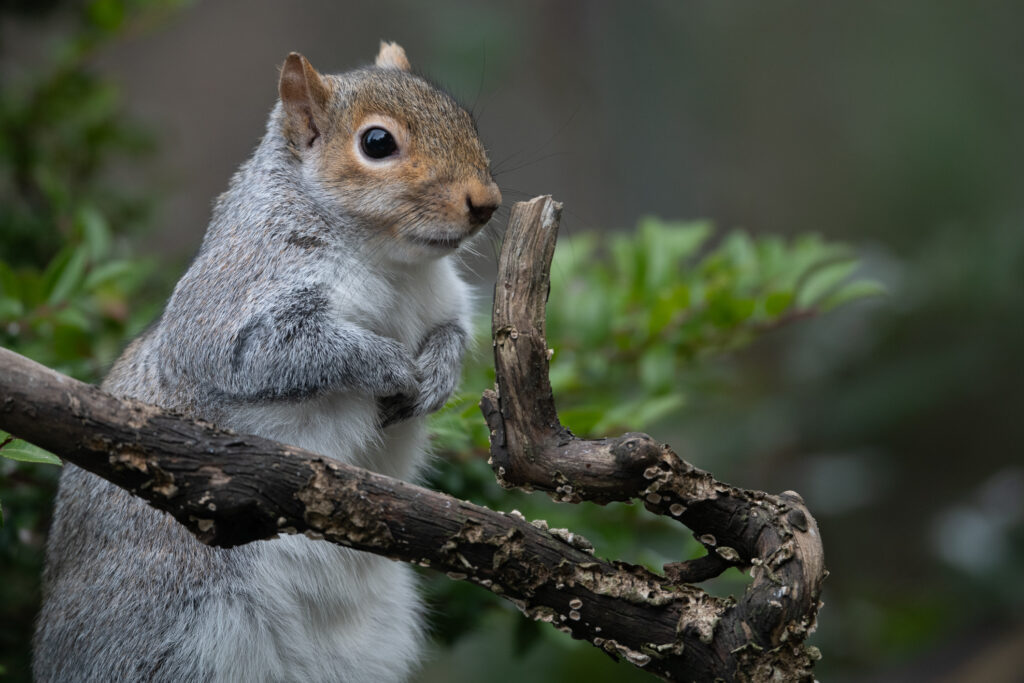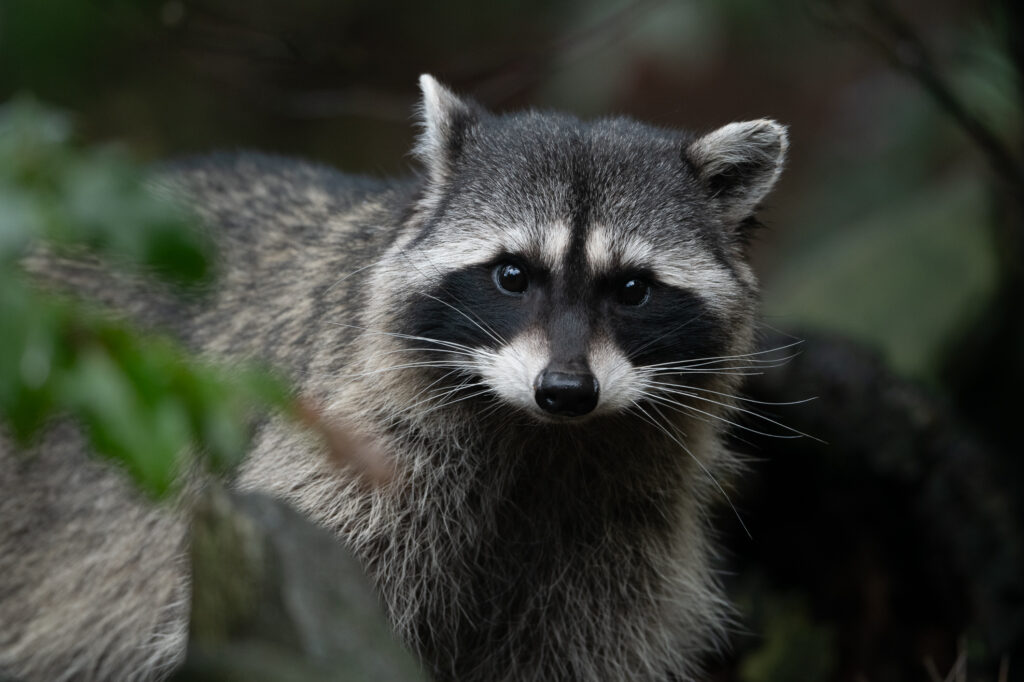It appears the we may finally climb out of sub-freezing temperatures on Tuesday, January 16! All of the birdbaths in the yard have been frozen solid for several days now, but the moving weather in the watercourse along with a small heater have kept water running freely in our watercourse. This has been a huge attractant to the birds, but other than our usual residents we’ve had no interesting visitors. I have spent a few hours out in twenty-degree temperatures for some good photos of birds but am disappointed that there have been no really interesting visitors despite probably having one of the only sources of water within at least several hundred yards.
I’m going to digress a little here, but here is another of birding’s conundrums… how do Bushtits get their water? In my 20+ years of biting in the Pacific Northwest, I can never remember seeing a Bushtit, of which we have many, ever accessing any of our water features!
On to the photographs!
I’ll begin with our most interesting visitor, a male Varied thrush. We’ve had both a males and females visit the yard, but only sporadically and not at the same time. These birds’ habitat is generally the higher elevations of the Cascades, but when winter snow hides their food sources they migrate down to lower elevations.
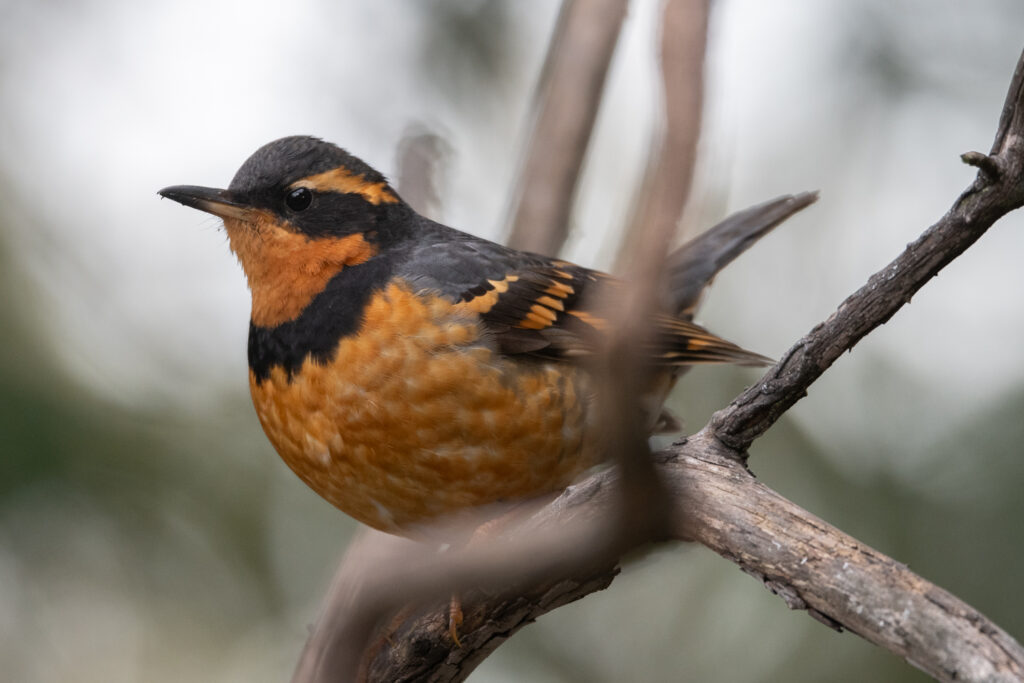
I’ll next throw in a couple of birds that non-birders sometimes have difficulty telling apart… the Black-capped chickadee…
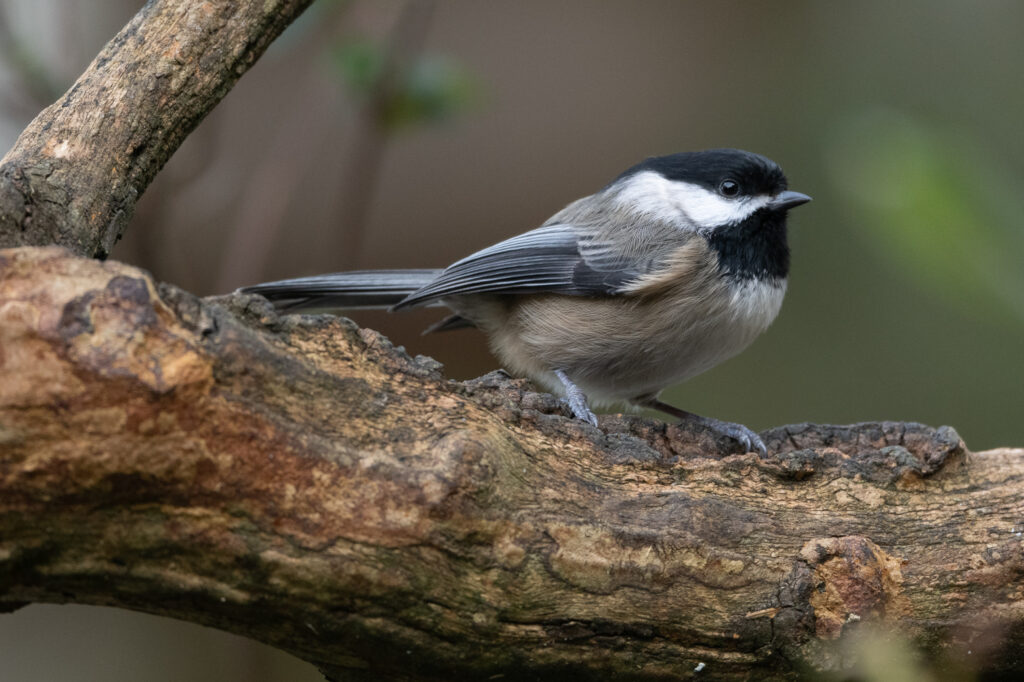
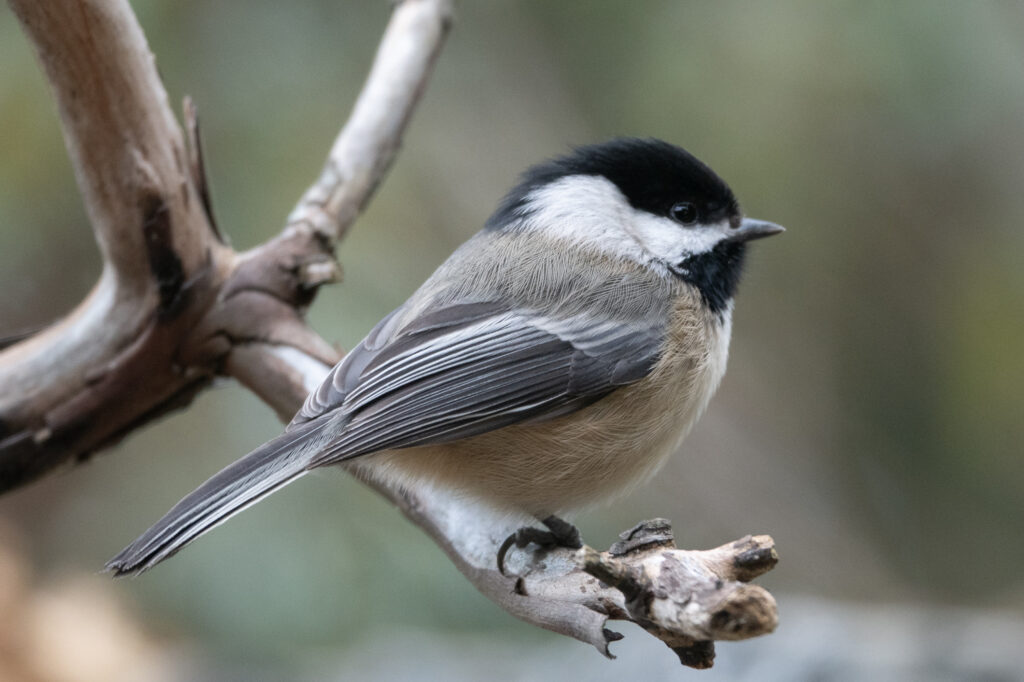
and the Chestnut-sided Chickadee.
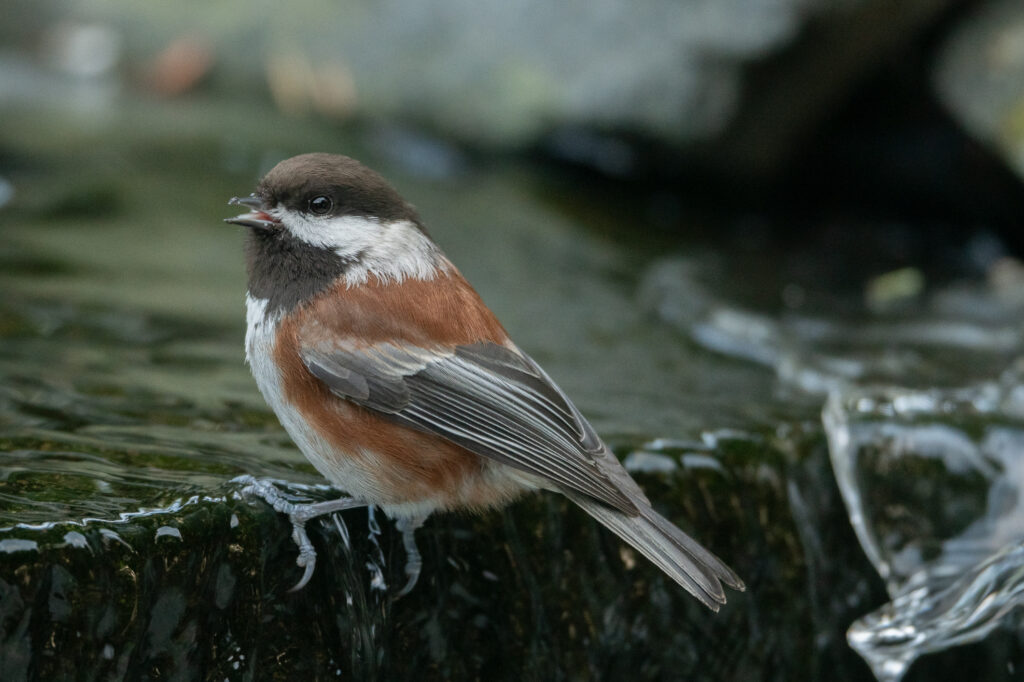
This past fall/winter the chickadees and I have become much better friends. They are now eating out of my hand and also raiding my main peanut supply I keep on the chair tray beside me. On one of our cold days I had four visits to the end of my camera lens (!) and another visit to one of my gloved hands, with an exploratory peck at the end of my exposed thumb (apparently sometimes considered ‘the BIG peanut’!
Two birds I initially had difficulty telling apart when we first moved to the Pacific Northwest… the Song sparrow…
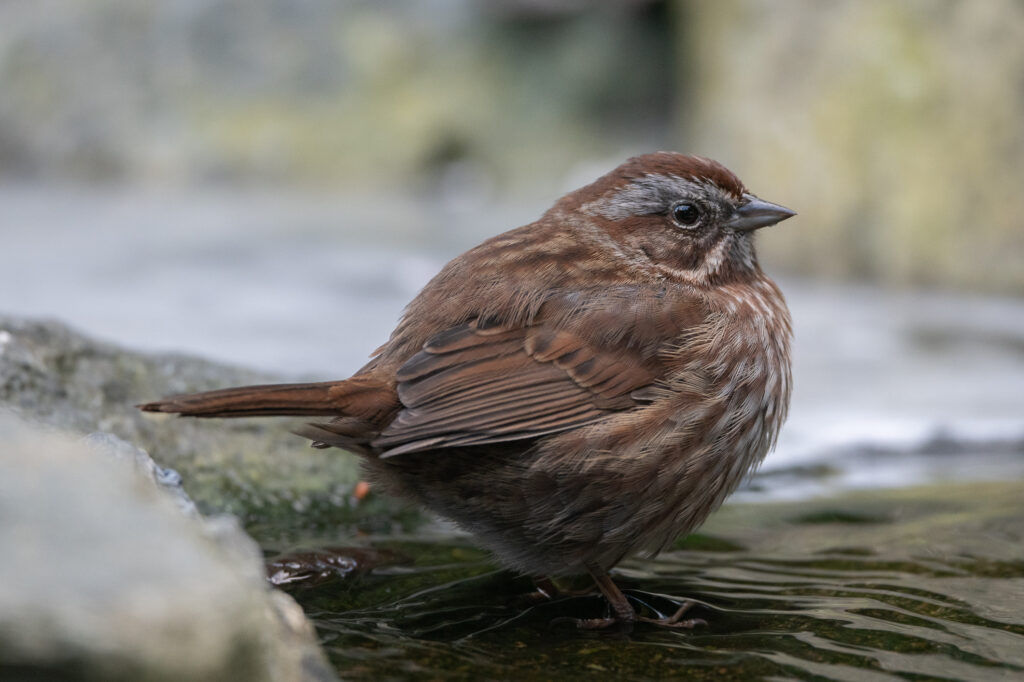
and the Fox sparrow, both species sometimes referred to as ‘LBBs’ (little brown birds). Part of the difficulty had to do with the fact that Song sparrows in Texas are considerably lighter in color, a characteristic that applies to some other species as well.
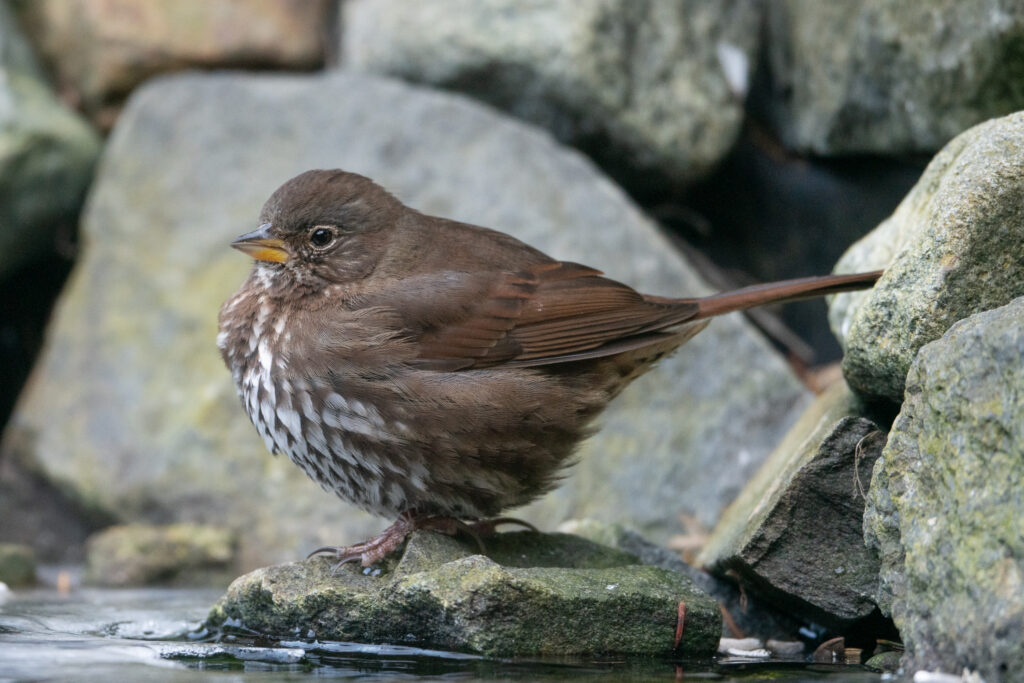
This Fox Sparrow is enjoying a bath on a pre-freezing but still very cold day…
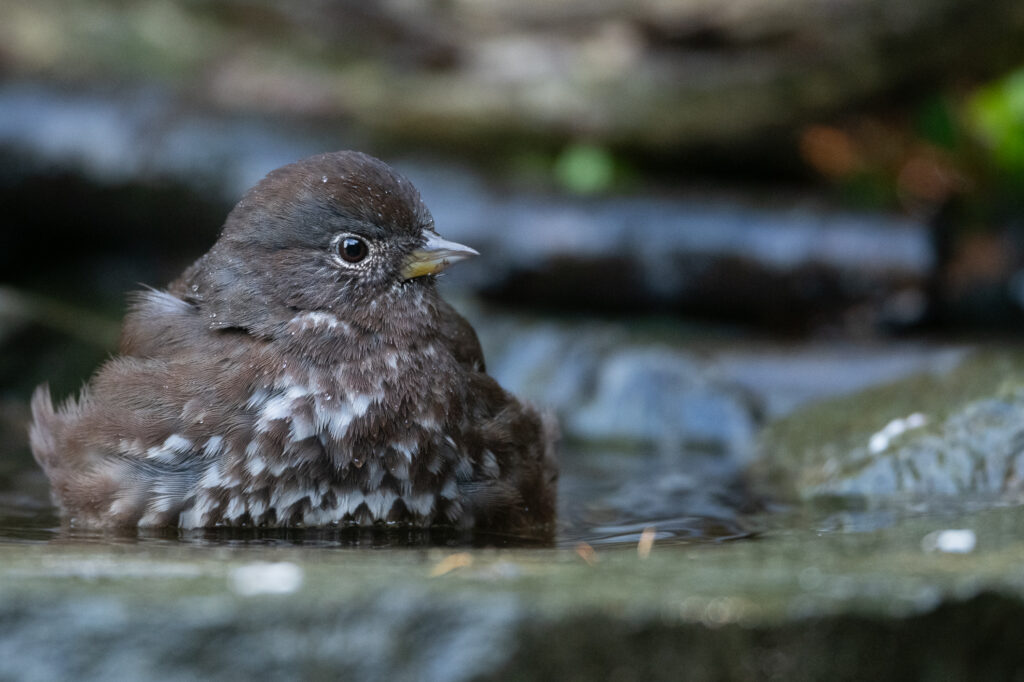
This male House finch stoped by for a brief drink. We had a lot of House finches during the summer but they are now quite rare in the yard despite being considered year-round visitors.
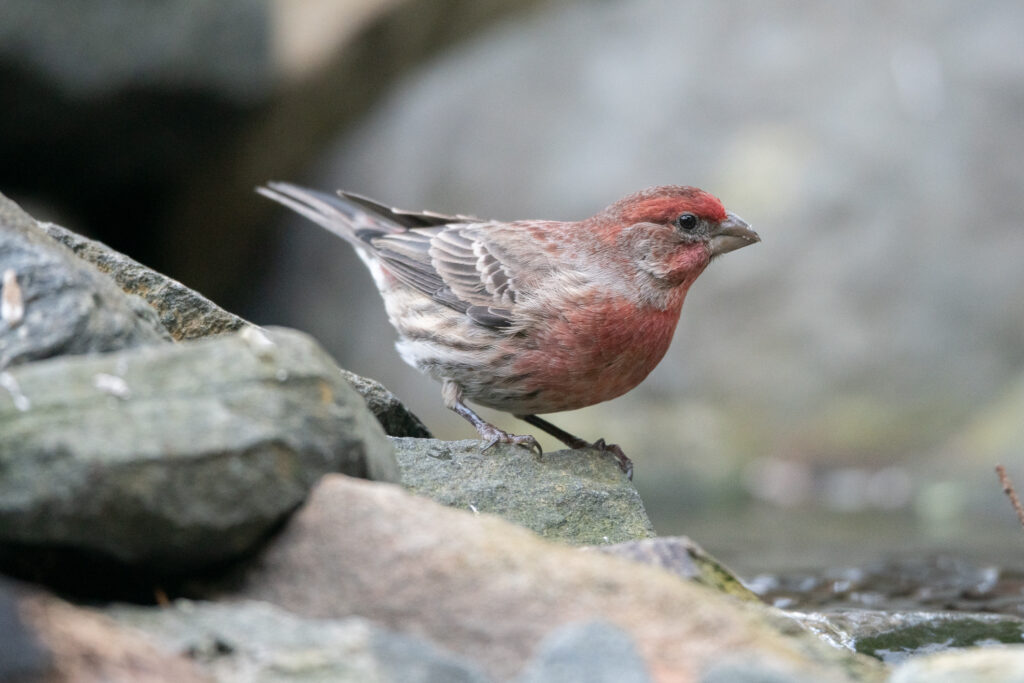
I want to also mention this lame Dark-eyed (Oregon) junco which is a regular visitor. It doesn’t keep its stomach off the ground, has difficulty balancing when perching and skitters around the yard, but it can fly quite well. I try to see that it gets its share of the food I dole out.
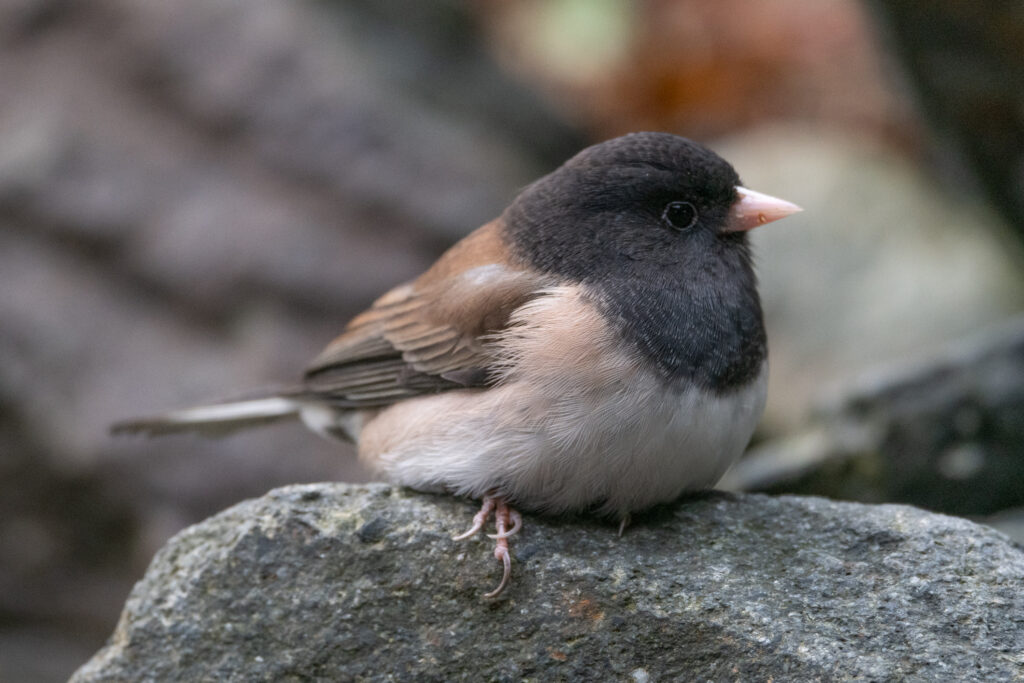
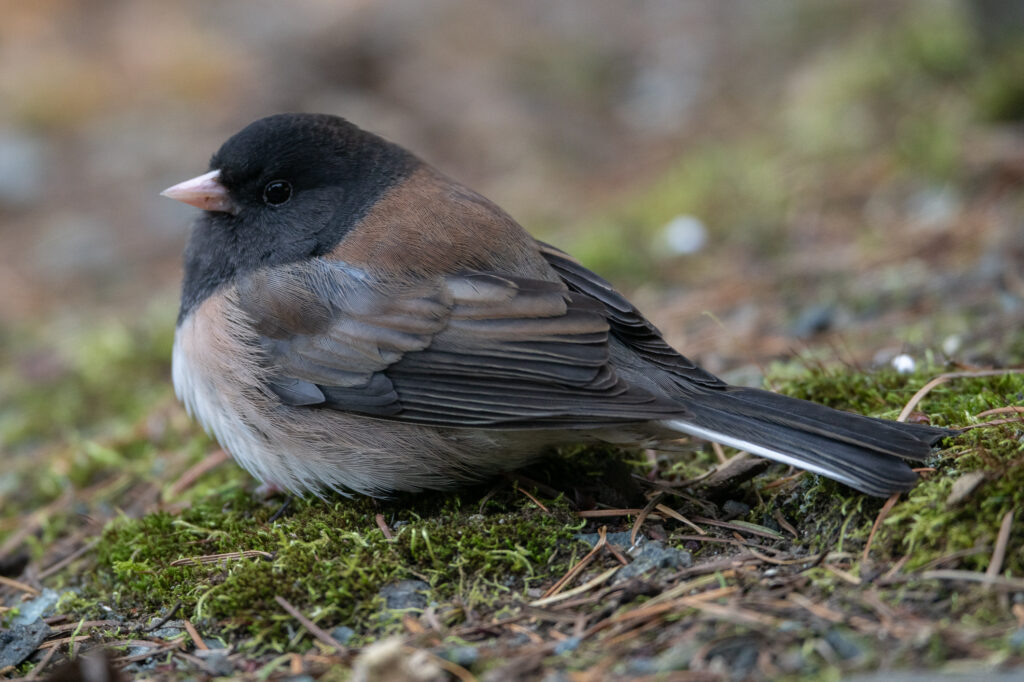
Finally (remember, there is always a ‘finally’), a couple of visitors that need no introductions…
